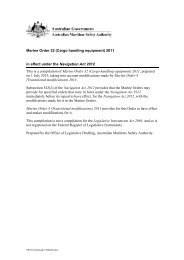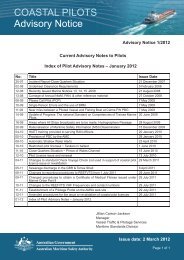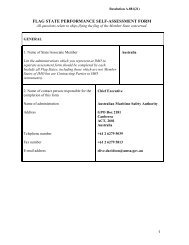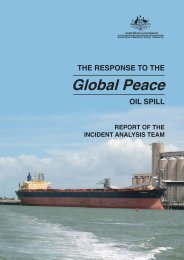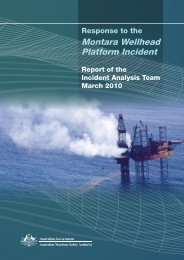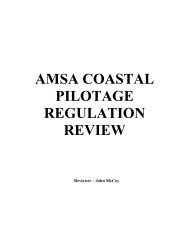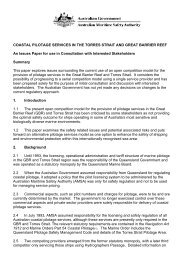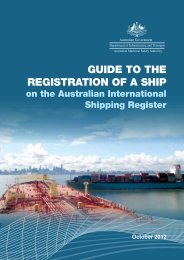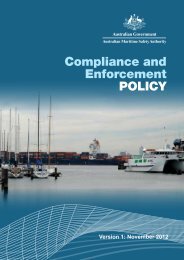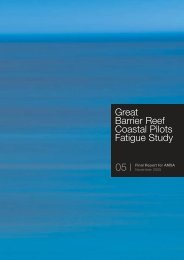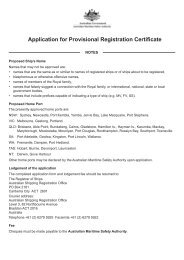Oil Spill Monitoring BACKGROUND PAPER - Australian Maritime ...
Oil Spill Monitoring BACKGROUND PAPER - Australian Maritime ...
Oil Spill Monitoring BACKGROUND PAPER - Australian Maritime ...
Create successful ePaper yourself
Turn your PDF publications into a flip-book with our unique Google optimized e-Paper software.
<strong>Oil</strong> <strong>Spill</strong> <strong>Monitoring</strong>: Background Paper<br />
4.3 Setting the Spatial Boundaries of the Study<br />
The spatial boundaries of a monitoring study will depend primarily on the actual or<br />
potential area affected by the spill. Spatial boundaries should be sufficient to meet<br />
monitoring objectives; usually determining impacted areas and the level of effects,<br />
linking effects to the spill source, and supporting decisions on cleanup strategies.<br />
The boundaries should also be sufficient to cover representative areas of each:<br />
• Type of substrate.<br />
• Ecological community.<br />
• Shoreline energy level.<br />
• Degree of oiling.<br />
• Cleanup method employed.<br />
4.4 Selecting <strong>Monitoring</strong> Sites<br />
When attempting to detect impacts or compare areas it is important to account for<br />
pre-existing influences on the environment.<br />
4.4.1 Stratification of Sites<br />
Wherever possible monitoring sites should be selected on the basis of one or more<br />
defined “strata” such as substrate type (cobble beaches, rock platforms), tidal<br />
elevation, or areas of biological importance (e.g. seagrass beds). This “stratification “<br />
minimises non-spill related variance and allows sites to be directly compared where<br />
the key difference is the impact of the spill or cleanup method used, not pre-existing<br />
differences like tidal elevation.<br />
4.4.2 Selection of Control Sites<br />
When comparing impacted sites to unimpacted sites, the unimpacted sites should be<br />
as similar as possible to impacted sites, should be representative of wider areas, and<br />
be free from obvious sources of confounding influences unrelated to the spill. In<br />
particular, key physical factors (i.e., temperature, salinity, currents, aspect, habitat<br />
type, shore profile, substrate) should not differ significantly between sites. Multiple<br />
sites are usually required to account for natural variability between control and impact<br />
sites.<br />
Control sites can also include areas that have been impacted by the spill and are left<br />
to recover naturally. These sites are used to assess the effects of cleanup options,<br />
and/or natural recovery. It is often difficult to convince people that leaving impacted<br />
sites uncleaned is an appropriate thing to do.<br />
4.5 Defining the Level of Accuracy Required<br />
As noted in Section 4.2, natural variation of parameters can make it difficult to obtain<br />
data that clearly show changes attributable to a spill. Generally, detection of small<br />
changes will require more sampling and replication than detection of gross changes.<br />
However, other constraints may limit the scale of the monitoring programme.<br />
The required level of accuracy will depend entirely on the objective of each monitoring<br />
study and the end-use of the data.<br />
12



